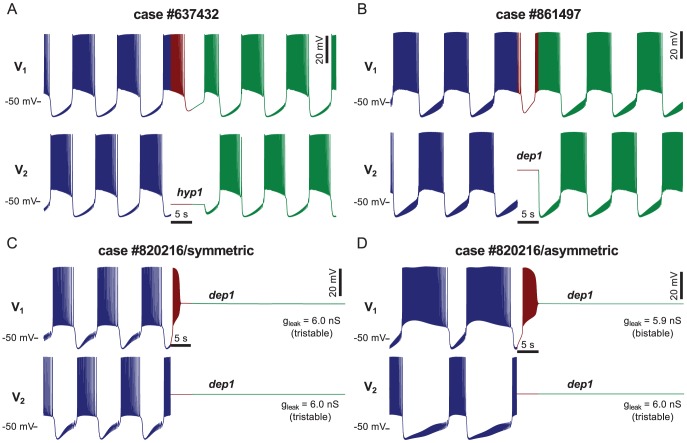Figure 8. Perturbation of half-center oscillators constructed from pairs of multistable neurons.
Functional alternating bursting pattern (blue) was interrupted by the perturbation, during which the synaptic interaction was blocked for 5 s (red) and one cell (bottom trace) was reset (not clamped) to its stable stationary state (one of the two states in the case of tristable cells). After the perturbation, the synaptic interactions were restored (green). Panels A–C show results for symmetric HCOs with two identical neurons. In the case #637432 neurons exhibit coexistence of the hyp1 stationary state and bursting (A). In the cases #861497 (B) and #820216 (C) neurons are tristable (coexistence of the hyp1 and dep1 stationary states and bursting). Panel D shows an example of perturbation of an asymmetric HCO. One neuron (bistable,  = 5.9 nS) differs in the leak conductance from the other neuron (tristable case as in C,
= 5.9 nS) differs in the leak conductance from the other neuron (tristable case as in C,  = 6.0 nS). The panels A and B represent majority of the cases by showing that an HCO regains functional bursting after perturbation. Panel C presents an example where the perturbation led to a dysfunctional activity. This dysfunctional outcome of the perturbation could be observed in asymmetric HCOs as well (D). The difference between the neurons' leak conductances is reflected in strong asymmetry in the bursting pattern before the perturbation.
= 6.0 nS). The panels A and B represent majority of the cases by showing that an HCO regains functional bursting after perturbation. Panel C presents an example where the perturbation led to a dysfunctional activity. This dysfunctional outcome of the perturbation could be observed in asymmetric HCOs as well (D). The difference between the neurons' leak conductances is reflected in strong asymmetry in the bursting pattern before the perturbation.

